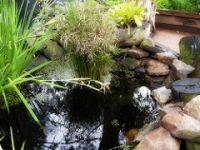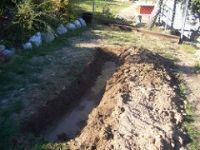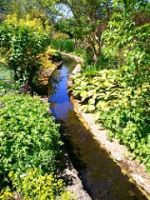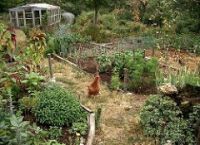Earthworks In a Permaculture Garden
Managing water pathways on permaculture land often involves more than just planting trees and other vegetation, and managing and caring for the soil. Permaculture systems often incorporate earthworks, which can store, slow, or direct water throughout a site. In permaculture, an understanding of the water cycle, and how water moves through a landscape, is used to select sites for food production and to manage water to allow natural systems to flourish for human benefit. Let's take a quick look at some of the earthworks you might see in a permaculture garden:

Water Storage Sites
Water can be stored by earthworks such as ponds, pools, basins and in-ground storage tanks. While water is also stored in the natural vegetation of your garden, it can be useful to create these standing bodies of water. Not only will this allow you to keep the water around for your use, it will also aid in attracting beneficial wildlife to the garden.

Swales
Swales are another important element in permaculture design. Swales are used to slow the flow of water on a site and to collect and hold water on a given piece of land. In most areas, there is not a shortage of water, so swales are a less common feature here than they are elsewhere in the world. That said, creating swales and berms can be used in some gardens, especially those in lower rainfall gardens.

Irrigation
Irrigation layouts, either channels, or sophisticated land-forming techniques such as those used for flood or sheet irrigation, can also be elements of permaculture design in a garden. We tend to think of irrigation as a solution for arid, low-rainfall areas. But irrigation channels can also be used as a means to avoid waterlogging or flooding in certain parts of the garden, and to channel water to where it is needed, or where it will not do damage.

Terraces
A final type of earthworks in a permaculture garden are terraces, which can be formed on a steeply sloped site. Ultimately, the formation of terraces can also be about managing the flow of water through a garden. On steep slopes, water will flow quickly to the base and the soil can become degraded and lower in nutrients over time. Planting vegetation is one great way to stabilise a steep garden slope, and on-contour swales are another. Sometimes, however, wider terrace formation may be required in order to give wider spaces for growing areas or garden seating.